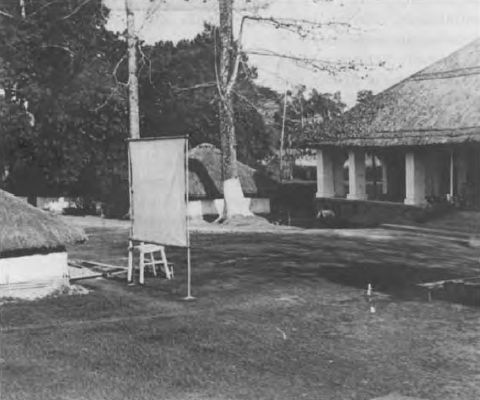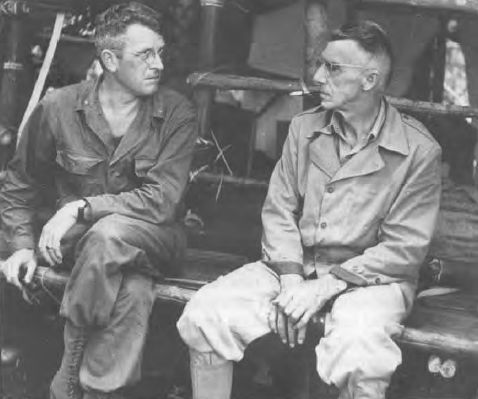OSS Detachment 101 on:
[Wikipedia]
[Google]
[Amazon]



 Detachment 101 of the Office of Strategic Services (formed under the
Detachment 101 of the Office of Strategic Services (formed under the
here
Actually, the medal was the result of a mistake. An OSS officer, reading a radio message that advised him how to reward heroic Kachin action, misinterpreted the abbreviation for "comma" ("CMA") as signifying some sort of a medal. Reluctant to leave the Kachins empty handed, the OSS quickly created the medal and presented it to them.Hughes, Les
Retrieved 2 June 2012
OSS 101 Association
Groups of World War II Military units and formations of the United States Army in World War II Military units and formations in Burma in World War II



 Detachment 101 of the Office of Strategic Services (formed under the
Detachment 101 of the Office of Strategic Services (formed under the Office of the Coordinator of Information
The Office of the Coordinator of Information (COI) was an intelligence and propaganda agency of the United States Government, founded on July 11, 1941, by President Franklin D. Roosevelt, prior to U.S. involvement in the Second World War. It was in ...
(COI) just weeks before it evolved into the OSS) operated in the China-Burma-India Theater of World War II. On 17 January 1956, it was awarded a Presidential Distinguished Unit Citation by President Dwight Eisenhower, who wrote: "The courage and fighting spirit displayed by its officers and men in offensive action against overwhelming enemy strength reflect the highest tradition of the armed forces of the United States
The United States of America (USA), also known as the United States (U.S.) or America, is a country primarily located in North America. It is a federal republic of 50 U.S. state, states and a federal capital district, Washington, D.C. The 48 ...
."
Detachment 101 was "the first American unit ever assembled to conduct guerrilla warfare, espionage and sabotage behind enemy lines."
History
Detachment 101 was the creation of Millard Preston Goodfellow, a leading figure at COI, and Director of Special Activities/Goodfellow (SA/G), which would later become the Special Operations Branch. "On April 14, 1942,William Donovan William or Bill(y) Donovan may refer to:
Sports
* Bill Donovan (1876–1923), pitcher and manager in Major League Baseball
* Bill Donovan (Boston Braves pitcher) (1916–1997), pitcher in Major League Baseball
*Billy Donovan (born 1965), American b ...
, as Coordinator of Information (which evolved into the Office of Strategic Services
The Office of Strategic Services (OSS) was the first intelligence agency of the United States, formed during World War II. The OSS was formed as an agency of the Joint Chiefs of Staff (JCS) to coordinate espionage activities behind enemy lines ...
that June), activated Detachment 101 for action behind enemy lines in Burma
Myanmar, officially the Republic of the Union of Myanmar; and also referred to as Burma (the official English name until 1989), is a country in northwest Southeast Asia. It is the largest country by area in Mainland Southeast Asia and ha ...
. The first unit of its kind in US service, the Detachment was charged with gathering intelligence, harassing the Japanese through guerrilla actions, identifying targets for the Army Air Force to bomb, and rescuing downed Allied airmen. Because Detachment 101 was never larger than a few hundred Americans, it relied on support from various tribal groups in Burma. In particular, the vigorously anti-Japanese Kachin people
The Kachin peoples (, ; , ) are a collection of diverse ethnolinguistic groups inhabiting the Kachin Hills in northern Myanmar's Kachin State, as well as Yunnan Province in China, and the northeastern Indian states of Arunachal Pradesh and As ...
were vital to the unit's success. By the time of its deactivation on July 12, 1945, Detachment 101 had scored impressive results. According to official statistics, with a loss of some 22 Americans, Detachment 101 killed 5,428 Japanese and rescued 574 Allied personnel." 101's efforts opened the way for Stilwell's Chinese forces, Wingate's Raiders, Merrill's Marauders
Merrill’s Marauders (named after Frank Merrill) or Unit ''Galahad'', officially named the 5307th Composite Unit (Provisional), was a United States Army long range penetration special operations jungle warfare unit, which fought in the South-E ...
, and the great counter-attack against the Japanese Imperial life-line."
During most of the unit's existence, it funded and coordinated various resistance groups made up of the Kachin people of northern Burma. The best known resistance force was known as the Kachin Rangers and was under the command of Carl F. Eifler, though often the term Kachin Rangers has been used to describe all Kachin Forces raised during the war by the Americans in Northern Burma.
In July 1942, twenty OSS men moved in and set up headquarters at Nazira in the northeastern Indian province of Assam
Assam (, , ) is a state in Northeast India, northeastern India, south of the eastern Himalayas along the Brahmaputra Valley, Brahmaputra and Barak River valleys. Assam covers an area of . It is the second largest state in Northeast India, nor ...
. No operations of any significance occurred until the end of 1942. Starting in 1943, small groups or individuals were parachuted behind Japanese lines to remote Kachin villages, followed by a parachute supply drop. The Americans then began to create independent guerrilla groups of the Kachin people, calling in weapons and equipment drops. In December 1943 Stilwell issued a directive that Detachment 101 increase its strength to 3,000 guerillas. They were recruited from within Burma, many of them "fierce Kachins".Hogan.
Once established, the groups undertook a variety of unconventional missions. They ambushed Japanese patrols, rescued downed American pilots, and cleared small landing strips in the jungle. They also screened the advances of larger Allied forces, including Merrill's Marauders
Merrill’s Marauders (named after Frank Merrill) or Unit ''Galahad'', officially named the 5307th Composite Unit (Provisional), was a United States Army long range penetration special operations jungle warfare unit, which fought in the South-E ...
.
Eifler held the rank of colonel
Colonel ( ; abbreviated as Col., Col, or COL) is a senior military Officer (armed forces), officer rank used in many countries. It is also used in some police forces and paramilitary organizations.
In the 17th, 18th, and 19th centuries, a colon ...
when he was relieved because of serious head injuries, Lt. Col. William R. Peers taking over command. At the end of the war, each Kachin Ranger received the CMA (Citation for Military Assistance) Award.Rangers were given a "Certificate of Military Assistance" and a medal known as a "Citation for Military Assistance." An illustration of an actual certificate and medal presented to a Kachin Ranger may be viewehere
Actually, the medal was the result of a mistake. An OSS officer, reading a radio message that advised him how to reward heroic Kachin action, misinterpreted the abbreviation for "comma" ("CMA") as signifying some sort of a medal. Reluctant to leave the Kachins empty handed, the OSS quickly created the medal and presented it to them.Hughes, Les
Retrieved 2 June 2012
See also
*Ledo Road
The Ledo Road () was an overland connection between British India and China, built during World War II to enable the Western Allies to deliver supplies to China and aid the war effort against Japan. After the Japanese cut off the Burma Ro ...
* Force 136
Force 136 was a far eastern branch of the British World War II intelligence organisation, the Special Operations Executive (SOE). Originally set up in 1941 as the India Mission with the cover name of GSI(k), it absorbed what was left of SOE's O ...
* Fort Hertz
*'' Behind the Burma Road''
*Burma campaign
The Burma campaign was a series of battles fought in the British colony of British rule in Burma, Burma as part of the South-East Asian theatre of World War II. It primarily involved forces of the Allies of World War II, Allies (mainly from ...
Notes
References
Further reading
* * * *{{cite book , title=Behind Japanese Lines: With the OSS in Burma , url=https://archive.org/details/behindjapaneseli00dunl , url-access=registration , first=Richard , last=Dunlop , year=1979 , isbn=0-528-81823-6 * Peers, William R. and Dean Brelis (1963). '' Behind the Burma Road''. Boston: Little, Brown & Co. *Central Intelligence Agency. ''Intelligence Operations of OSS Detachment 101.'' Retrieved 2012-05-28. *Central Intelligence Agency. ''Behind Japanese Lines in Burma: The Stuff of Intelligence Legend (2001).'' Retrieved 2012-05-30.External links
OSS 101 Association
Groups of World War II Military units and formations of the United States Army in World War II Military units and formations in Burma in World War II